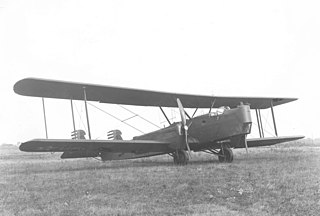
The Huff-Daland XB-1 was a prototype bomber aircraft built for the United States Army Air Corps.

The P-1 Hawk was a 1920s open-cockpit biplane fighter aircraft of the United States Army Air Corps. An earlier variant of the same aircraft had been designated PW-8 prior to 1925.
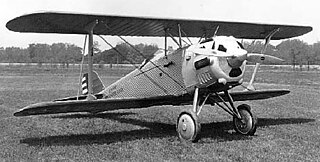
The XP-13 Viper was a prototype biplane fighter aircraft designed by the American company Thomas-Morse Aircraft Corporation. The airplane was delivered to the United States Army in 1929, but they did not adopt it.

The Boeing P-29 and XF7B-1 were an attempt to produce a more advanced version of the highly successful P-26. Although slight gains were made in performance, the U.S. Army Air Corps and U.S. Navy did not order the aircraft.

The Consolidated PT-1 Trusty was a biplane primary trainer used by the United States Army Air Service (USAAS).
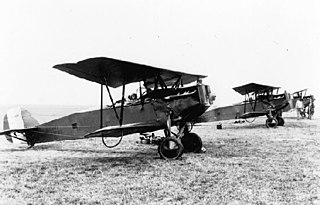
The Huff-Daland Type XV Training Water-Cooled TW-5 was a biplane trainer designed by the Huff-Daland Aero Corporation in the early 1920s for the United States Army Air Service.
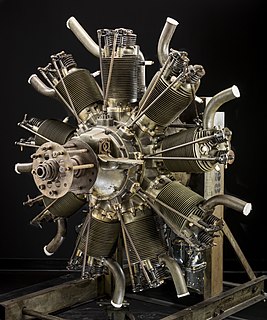
The Lawrance J-1 was an engine developed by Charles Lanier Lawrance and used in American aircraft in the early 1920s. It was a nine-cylinder, air-cooled radial design.

The BAT F.K.23 Bantam was a British single-seat fighter biplane produced by British Aerial Transport Company Limited of London during World War I.

The Bellanca CH-400 Skyrocket is a six-seat utility aircraft built in the United States in the 1930s, a continuation of the design lineage that had started with the Bellanca WB-2. Retaining the same basic airframe of the preceding CH-200 and CH-300, the CH-400 was fitted with a more powerful Pratt & Whitney Wasp radial engine.

The Bellanca 31-40 Senior Pacemaker and its derivatives were a family of a six- and eight-seat utility aircraft built in the United States in the late 1930s. They were the final revision of the original late 1920s Wright-Bellanca WB-2 design. The model numbers used by Bellanca in this period reflected the wing area and engine horsepower, each divided by ten. Like their predecessors, these were high-wing braced monoplanes with conventional tailwheel undercarriage.
The Elias TA-1 was a 1920s American biplane training aircraft built by Elias. Only three aircraft were built for evaluation by the United States Army Air Service.

The Thomas-Morse O-19 was an American observation biplane built by the Thomas-Morse Aircraft Company for the United States Army Air Corps.

The Huff-Daland LB-1 was an American biplane light bomber aircraft operated by the United States Army Air Service in the 1920s.
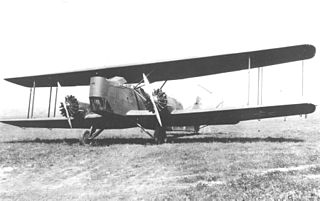
The Keystone XLB-3 was a prototype bomber biplane developed in the United States in the late 1920s. It was a twin-engine development of the single-engine LB-1, brought about by a change in policy by the United States Army Air Corps (USAAC).

The Huff-Daland XHB-1 "Cyclops" was a 1920s American prototype heavy bomber designed and built by the Huff-Daland company.
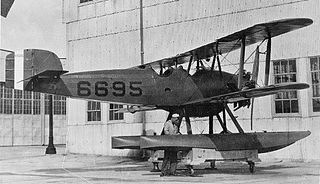
The Naval Aircraft Factory N2N was an American two-seat open-cockpit primary training biplane designed and built by the Naval Aircraft Factory. The N2N could be fitted with twin-floats and was powered by a 200 hp Lawrance J-1 radial engine, only three N2N-1s were built.
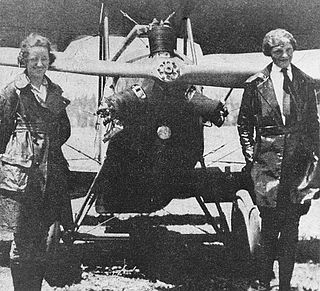
The Kinner Airster is an American two-seat single-engined biplane designed by Bert Kinner and built by his Kinner Airplane & Motor Corporation.
The Nakajima Ha5 is a twin row, 14 cylinder air-cooled radial aircraft engine built by the Japanese Nakajima Aircraft Company. The engine was a development of earlier single-row Japanese engines, the Kotobuki and Hikari, which had combined features of the Bristol Jupiter and Pratt & Whitney R-1340 Wasp designs.
The Martin XLB-4 was a 1920s proposal for a light bomber by the Glenn L. Martin Company.
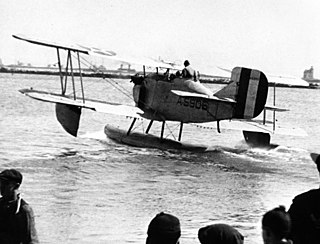
G Elias & Brother was and American manufacturer of cabinets and aircraft based in Buffalo, New York in the 1920s. A.G. Elias sat on the Manufacturers Aircraft Association's board of directors along with President Frank H. Russell, VP Glenn L. Martin, Charles L. Laurence, Chance M. Vought, S.S. Bradley, George P. Tidmarsh, and Donald Douglas. E.J Elias promoted the construction of a Buffalo municipal airport to aid the local fledgling airplane industry of five aviation companies constructing airplanes and airplane parts. From 1920 to 1925, Elias company's chief engineer, David Earle Dunlap (1896-1957), designed the Elias EM-2 Expeditionary planes. He designed the NBS-3 bomber fuselage and the Elias M-1 Mail plane. Dunlap's Elias TA-1 design was the first United States Army Air Corps Trainer to have a radial engine. After tests a McCook Field, the Army Air Corps selected other manufacturers over the Elias bomber and trainer. The company designed the Elias EM-1 to meet requirements for a multirole amphibian marine expeditionary aircraft. Elias delivered six production Elias EM-2 aircraft with Liberty engines to the United States Navy in 1922.

















